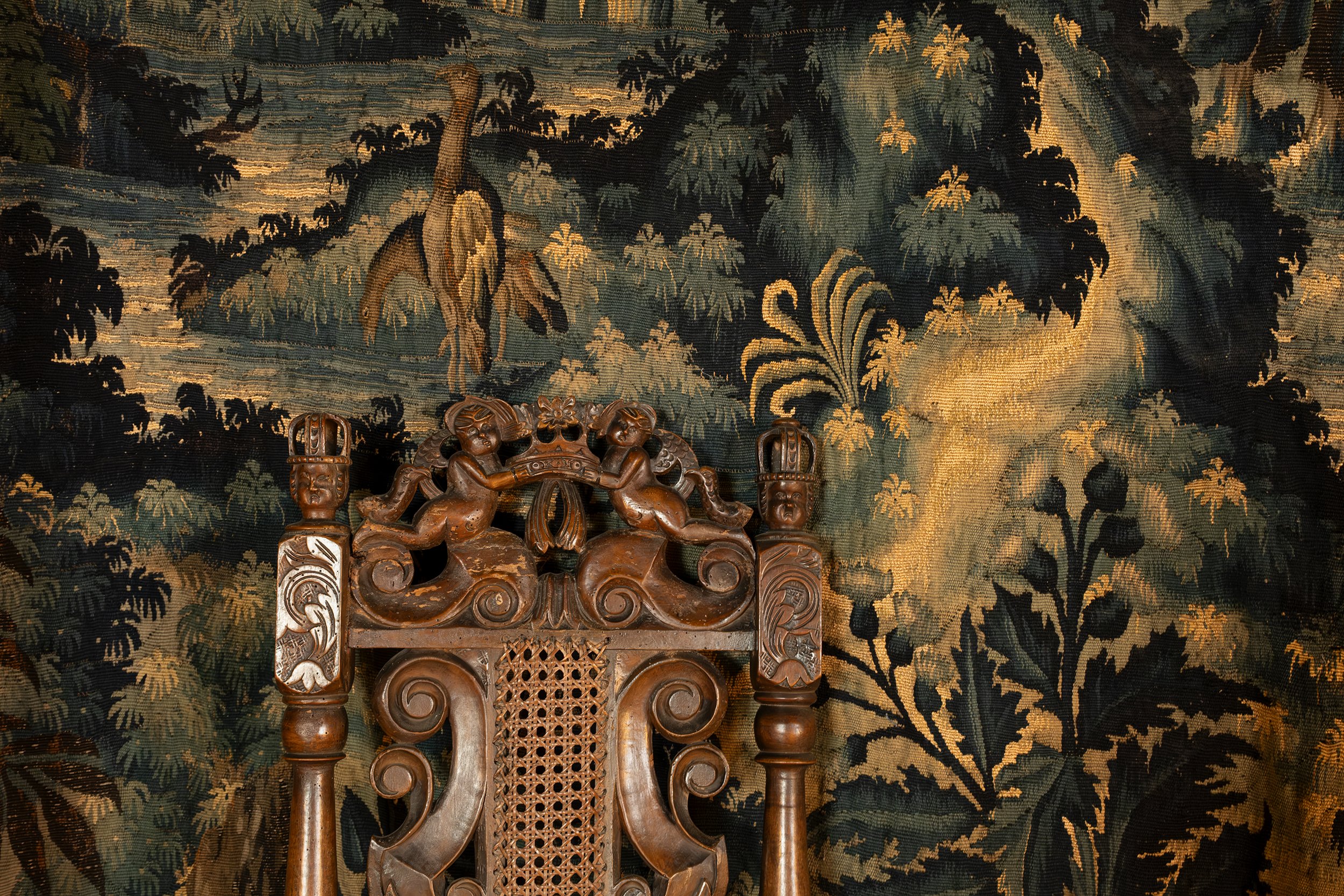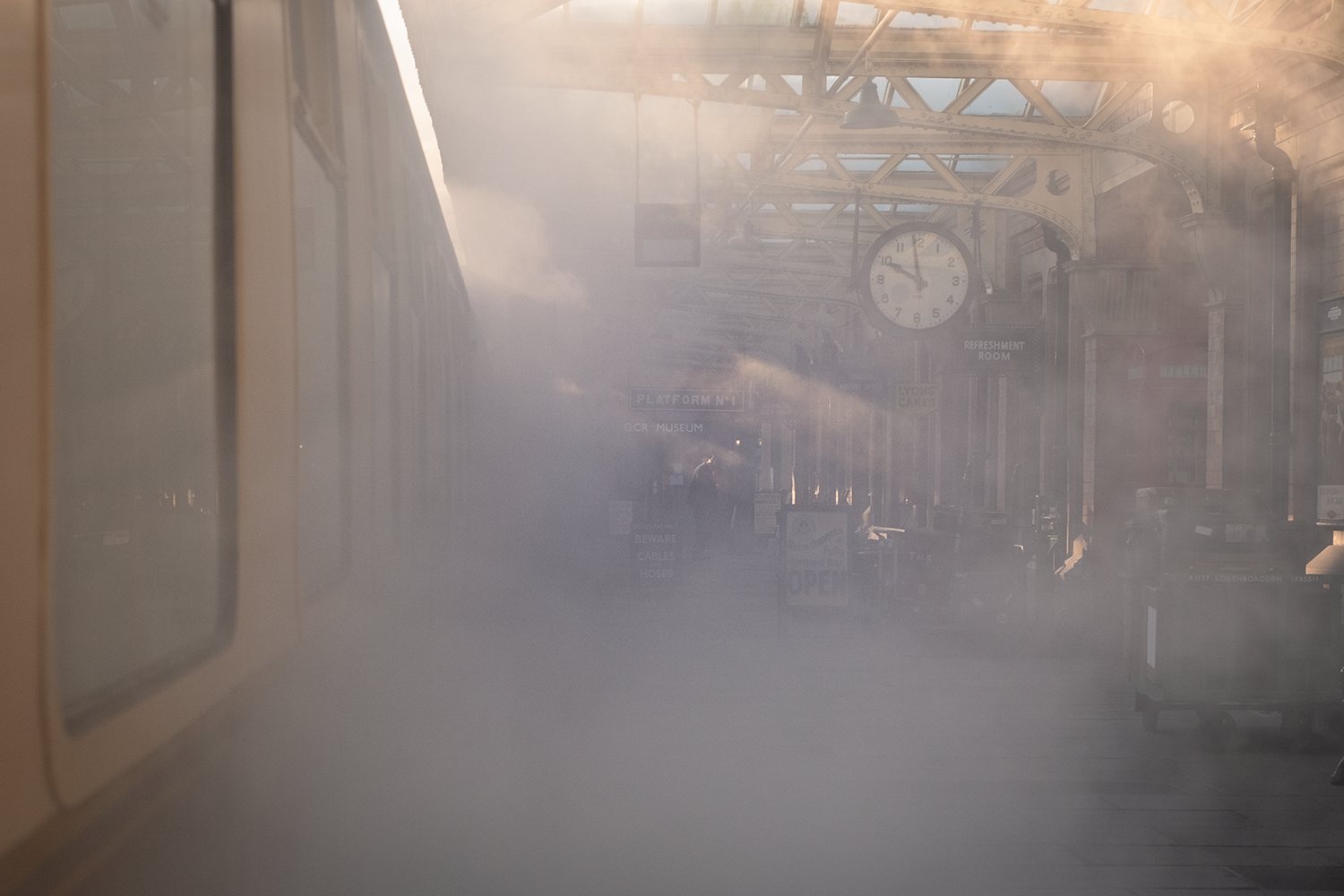We crossed over to Historic Houses, the first bridge - this one over the Wye
Flourishing our Christmas gift cards, a new membership
Already won over by the warmth of roasted beans, and that froth
We made tentative steps up to the entrance of Haddon Hall
I stalled at the first hurdle, unchecked camera settings equals noise
Then stepped back into the Middle Ages, worn down by footfall over centuries
Texture and strong materials hewn from the Peaks and beyond
Rubbing shoulders with shimmering reflected light
And candles, lots of candles
Many hands warmed at the fire
Ancient textiles keeping the drafts at bay in corners
A gift from a King
With the deep hues of heavy hard-worked threads lording over the yellow stone
Interiors to rival lesser colour inspos
A Grand Hall with the perfect scale for a festive choir
Leading singalongs with 5 Gold Rings!
A finale of Merlot and Prune Dumplings
It will suffice - a perfect capsule of retrospective and enduring Christmas spirit
Rosalind O’Dell
The Visitors - Ely Cathedral
A concealed entrance
A warm welcome from enthusiastic caretakers
A favourite space and an annual pass
The Almonry Restaurant and medieval precinct
Inside, glorious scale and height and strong design
A labour of love
High alters and stacking seats
Filigree portals and small side chapels
Looking down to the heavens in mirrored ceilings
Dramatic ironwork in deep shadows
Church elders climbing spiral stairs in a gothic stone casing
Empty polished mahogany choir stalls
with colourful hand-worked textiles on prayer pillows
A place for Queens, Saints and Martyrs,
sleeping champions and dignitaries,
contemplative individuals, enquiring couples and giddy groups
The Visitors
AMOUR - A LOVE INTRIGUE
Assignations and affirmations
Departures and hideaways
Entanglement and attachment
Intent and subterfuge
Traces and vestiges
Beguiling until journey’s end
Indeterminate
I’ll admit, I have complained and grumbled about the profusion of location-busting images published to mass media platforms on line. The ‘one-to-many’ phenomena of social media leaves very little to be personally discovered or happened upon. I’m talking of course about the plethora of images taken to record every secret nook and cranny of our wild spaces and the ‘sharing’ on the internet of geotags, detailed instructions to guide the masses to every known photogenic location and online mapping which allows virtual visits to each newly discovered beauty spot before even a pair of walking boots goes into the car with a camera and a tripod.
On my recent visit to the English Lake District, I thought about taking photographs which are my response to this uber-exposure. For this project, I decided to make images which are indeterminate, but instead the small details that resonated with me when I was immersed in the best that nature has to offer.
It’s poetic and personal and the images are not headliners. The moments captured for this project are not determinable, with precise locations established. No need. The beauty of nature doesn’t always need to be pinpointed on a map, just breathed in and breathed out.
This visit to Cumbria was centred in the Borrowdale Valley where you are surrounded by wooded valleys, rugged crags, old mine workings and inviting fells which will soothe your soul. Images are everywhere you look, some showstoppers at iconic locations (if that’s what you want) and others just indeterminate fragments of the same beautiful and diverse environments.
Sun and wine (and Sardines)
I recently visited the Route of Sun and Wine. At 55 kilometres long, it runs through the eastern area of Axarquia in the Malaga province. The route starts in Algarrobo, passes through Canillas de Albaida and ends at the coast in Nerja. The main agricultural product in the areas surrounding these villages is the grape, from which many very good wines are produced. However, anyone who knows me will know that my preferred tipple while in Spain is always Zoko Pacharan (a sloe flavoured liqueur) with ‘Casera’. I can’t recommend it highly enough, particularly as it has an alcoholic content of 25%.
My first excursion from our base above Velez-Malaga was to experience the impressive promenade and beach at Torre del Mar.
Dotted along the Paseo Maritimo there are many restaurants known as ‘Chiringuitos’ (beach bars) where sardines are grilled against hot coals burning on repurposed, sand-filled small boats in the sun. This relaxed coastal town has a retro charm to it. It was developed throughout the 60s, 70s and 80s for tourism, mainly attracting tourists from inland Spain. This helps no doubt to retain the town’s authentic Spanish vibe.
I returned to Torre del Mar one busy evening to enjoy one of many ‘fiestas’ held here throughout the year, each with a big free concert on the beach.
The nearby City of Malaga is where Pablo Picasso spent his early childhood. The atmosphere and the daily life of those years became the inspiration for some of the recurring themes in his paintings. Today it’s a tourist hub of course, not least because of the exemplary Museo Picasso in the Calle San Agustín which is where I photographed this contemporary artist on the day we visited the city.
On the route of sun and wine is Canillas de Albaida. The village is one of several typical Andalucian pueblos blancos which ring the edge of the national parks. The locals are called Canilleros and these images were taken on a short walk through the characteristic narrow back streets. The images are a study in light and shade, monochrome and contrast.
I really hope to return to this wonderful region in beautiful Southern Spain very soon. Salud!
Hip to be square
In my last blog from my latest visit to West London in April, I showcased images in the ‘cinematic’ format 2.39 x 1. The images were in full technicolour! In contrast, here are some more photos of the Notting Hill community, but this time the images have been converted into black and white.
I think that the absence of colour adds more weight to the contrasting tones and light in the images, all cropped to the rather cool ‘square’ format. It feels like “here, there and everywhere ….. it’s hip to be square” Huey Lewis & the News.
Pre-loved
On my last trip to this National Trust ‘un-stately home’, I photographed some of the neglected items which have been preserved in the various outbuildings and below stairs. Those items attracted me because of their sense of austere utility. In the house itself, you are reminded that this was very much a lived-in family home for generations. And so I returned to Calke Abbey last weekend to gather images, by contrast, of the amazing textiles to be seen around every turn in the house itself. The country house style was invented many years before ‘shabby chic’ and can be seen in the drapes, upholstery and furnishings in every room.
As one who has studied textiles and has a small but precious collection of vintage French fabrics myself, I find the faded cottons, mattress ticking and tapestries at Calke Abbey just wonderful.
Incidentally, the conservation team at Calke are currently cataloguing (with photographs) many more examples of these important, ancient textiles which they keep in their Textile Store.
Snap-happy in Notting Hill
It’s hard to imagine that Portobello Road was once a winding country path which connected the district of Notting Hill in the south and Kensal Green in the north. While the neighbouring area of Paddington was intentionally developed with upmarket residences, Portobello Road developed erratically. The area of Portobello provided affordable terraced accommodation to rent and a ‘shop front’ for traders to sell to their wealthy neighbours in Paddington. It attracted the rag and bone men of the day, and more brick-a-brack and antiques dealers followed. The market was defined and it is as quintessentially English today as it was nearly 300 years ago when it was a green lane.
Today it’s a trendy, vibrant and iconic retail and leisure experience. The vendors and their wares are characterful and diverse and that is why on Saturday - the market’s busiest day - I got off the train at Ladbroke Grove and had a decision to make.
Was I going to do some vintage shopping, enjoy the atmosphere and café vibe or take photographs? I did a bit of all three, to be honest. I bought some upholstery fabric, had an interesting collagen pastry with a coffee in a very Zen bakery and came home with ‘At Last’ ringing in my ears from the speaker blasting out the wonderful sound of Etta James in the Spring sunshine.
These images, from one of London’s most famous streets, were chosen because they reflect the colours and energy of the wonderful Notting Hill community.
Easy like Sunday morning
Last weekend I walked the mile or so from the old harbour at Burnham Overy Staithe to the unspoilt and empty beach beyond the raised bank and board walk. The beach stretches from west to east for as far as you can see and last Sunday morning the light was bright, the air sharp and fresh and the wind kind on my ears. The walk was particularly beautiful with a stunning mix of boats, salt marshes, pristine sands and wildlife. It was peaceful, with only a handful of visitors who were also enjoying their unique experience of this special Spring morning in North Norfolk.
There were dog walkers, twitchers, families and romantic weekenders but personally I could not have been without a camera. I did, however, take a few minutes to sit down and ‘take the weight off’ in a hollow of warm sand hidden among the dunes. I know now that I have found my new happy place!
Norfolk is the county which ‘provides the “still centre” when all around is in turmoil’. Edward Storey
Beautiful Antiquity
A visit to Calke Abbey is a lesson in harbouring found objects. The last generations of the Harpur family - who inhabited this remote baroque mansion for nearly 300 years - retained and continued to grow a treasured collection of ephemera within. The estate went into glorious decline, until it was ‘rescued’ in the 1980’s by the National Trust. The distressed and neglected state of the house and contents has been embraced for the unique aesthetic and as a study of British aristocratic decline.












































































































